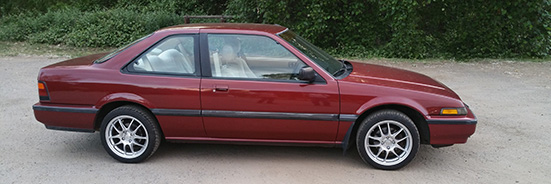
Originally Posted by
guyhatesmycar
Here is how I diagnose brakes:
Problem: Soft pedal.
1. Check master cylinder brake fluid level
Solution: Obvious. Bleed brakes afterwards.
2. Check for leaks, broken/bulging lines or wet areas. Remove wheels/drums and check wheel cylinders for leaks.
Solution: Replace affected part. Bleed your brakes.
3. Pump brake pedal rapidly. Check to see if it builds pressure.
Solution:
If pumping the pedal builds brake pressure (the pedal gets hard), the most likely situation is air. Bleed your brakes. If this doesn't solve the problem, another issue may be poorly adjusted drum brakes. In this case, pumping the pedal is necessary to take up the drum/shoe clearance before the brakes apply. After the brakes are released, return springs force the shoes back to their original position, creating excessive clearance again. Since your E-brake works, this is probably not your problem.
If pumping the pedal DOES NOT build brake pressure, you either; have an external leak (see number 2 above), or you have an internal leak in the master cylinder, or a faulty rear seal on the master cylinder allowing brake fluid into the booster. Remove/replace the master cylinder and bleed your brakes. If a failed rear seal has filled the booster with brake fluid, you "should" replace the booster. At least suction the fluid out. Also, black fluid and chunks of seal material in the reservoir indicate piston cups are in bad shape. Even if brake fluid isn't leaking out of the master cylinder, pressure can bypass the seals and return to the reservoir, instead of going to your brakes like it should.
4. Perform a brake function test. Road test the vehicle in a safe area.
I can also give you detailed instructions on how to properly and easily bleed your brakes if you want. It's simple, but if you do it wrong it'll become a major headache.
Good luck.



 Reply With Quote
Reply With Quote
 2004-2011?
2004-2011?











Bookmarks